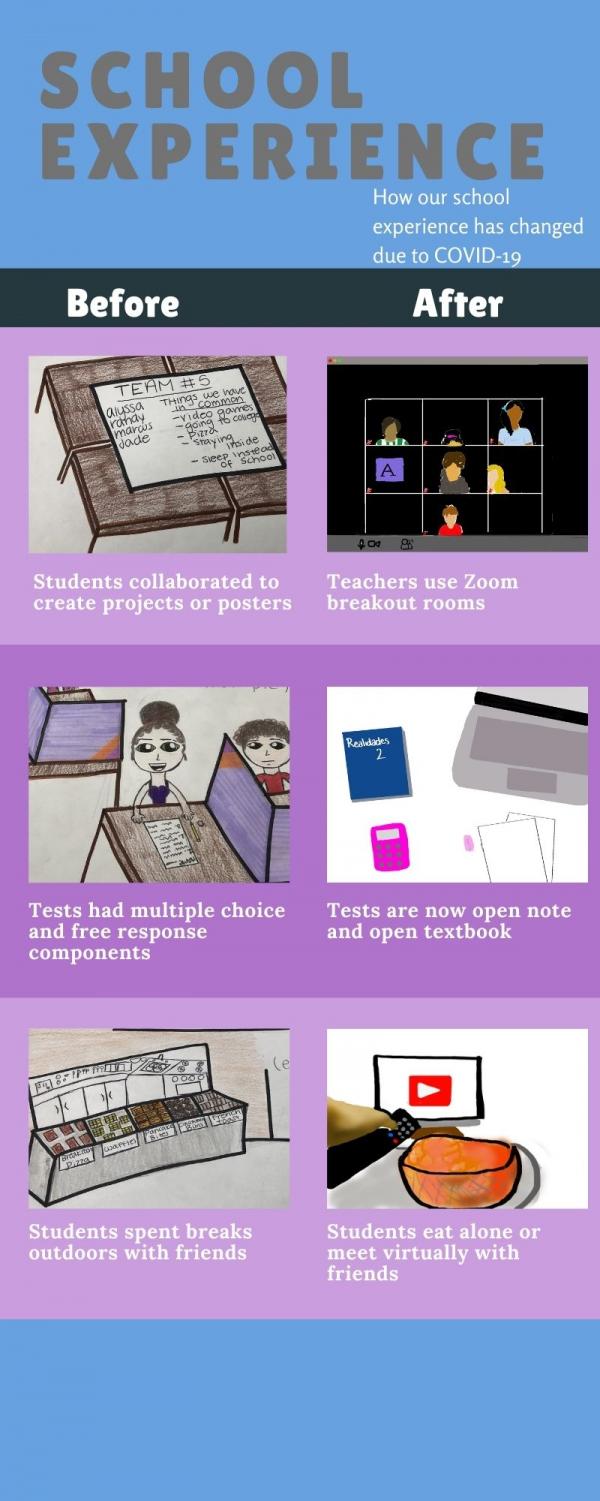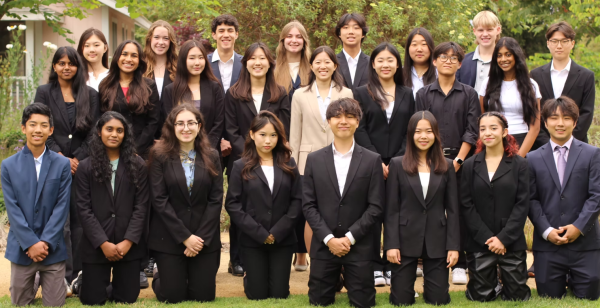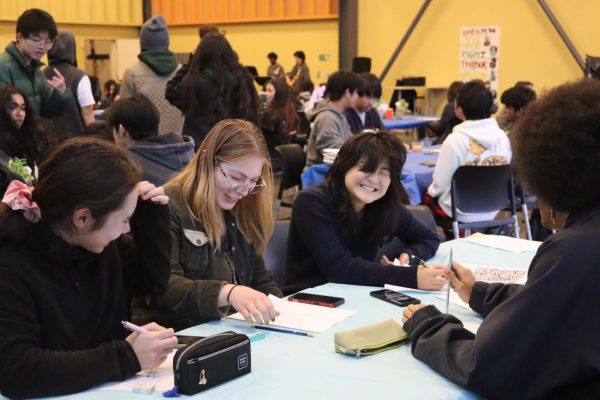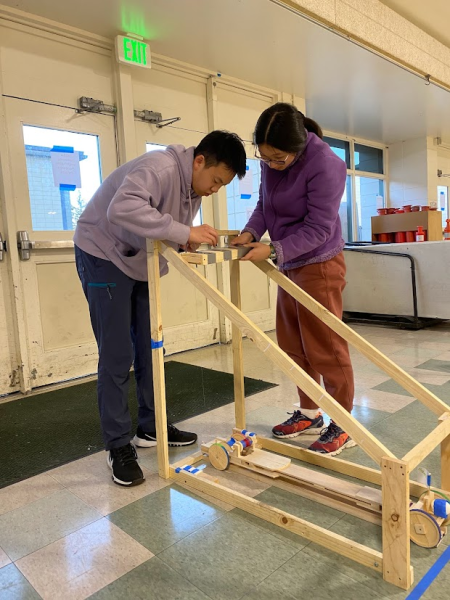Teachers rise with creativity in the face of adversity
The pandemic has changed the way education works, moving the focus from in-person instruction to online learning. Because of this, teachers have needed to do plenty of restructuring, both in terms of curriculum and finding new ways to interact with their students.
Online learning, for example, has forced music department lead John Burn to rethink the way he teaches. Because students cannot play in the same room, Burn said he has turned to the digital audio workstation, Soundtrap, which allows users to record, edit and create music online, to help keep his class running.

“We can just take away the professional track and leave all the student tracks and what’s left is the Homestead jazz ensemble playing a piece of music together,” Burn said in a Zoom interview.
A major problem for the music department has been figuring out how to play music together, virtually. Simply recording on Zoom does not work, as audio quality suffers and many students are not in sync when playing their instruments. Burn said he has had to find creative solutions.
“The biggest challenge is the simple fact that you can’t have synchronous music,” Burn said. “[An app called Upbeatmusicapp] kinda solves that but you’re still just performing by yourself and then quickly putting it together with the other group.”
Similarly, with the vast amount of presentations, group projects and other interactive activities students do in history classes, history teacher Daniela Hurst-Ruiz said she hopes to keep the most important parts of the curriculum intact, despite being online.
“I wanted to keep [the classroom experience the same] as much as possible, which of course is a little bit difficult because history is typically taking notes from the lecture,” Hurst-Ruiz said in a Zoom interview. “I’m cautious about not cutting out too much content because … [in history] there are certain, I would say milestones along the way, that I feel you have to know.”
Because there are no set guidelines as to what must be taught, teachers pick the important ideas that need to be covered, ceramics teacher Katie Schiltz said.
Art teachers, for example, are focusing on creating take-home art kits for students to complete their art projects remotely. Schiltz said she had to create 180 kits by herself.
“With ceramics I just put together these trays that have all these tools, but yet, trying to keep the costs down, because the cost can get pretty expensive, when you go to buy stuff,” Schiltz said.
While teachers have found creative ways to deliver instruction, hurdles in communication have made learning more difficult, Hurst-Ruiz said.
“I’m pretty good with reading body language in the classroom … whereas in Zoom that is a big challenge,” Hurst-Ruiz said. “A few kids have participated, but not everyone has said something. Some kids don’t want to show themselves on camera and I would like to know why. I totally respect them, but then again you have a hurdle there.”
Similarly, statistics and geometry teacher Shawn Southerd said that when teachers are unable to read body language online, they have a difficult time gauging what information their students are having trouble with and the interactive aspect of teaching is no longer there.
“[Teachers] have that sixth sense when we see a student and they just look lost. [If] I see half the class looks lost, I’m not going to move on,” Southerd said. “I’m going to say: quick thumbs up, thumbs down. We call them checks for understanding. [On Zoom], I can’t do that. I can’t have you work right in front of me and then see the mistakes right in front of my own eyes. So that reactive teaching is almost gone.”
History teacher Andrea Yee said this is a problem in her classes, as well.
“It’s harder to build relationships and make connections with kids through online learning,” Yee said. “I think the reactive teaching [is gone]. As a teacher, I walk around a lot, just listening to you all talking during your group discussions, and I can hear understandings, misunderstandings. I’ll say something and help, then move on. I can’t do that with the breakout rooms, it’s really hard to kind of gauge what’s happening.”
Yee said she finds it hard to know where her students are at when she can’t see them in person. At the same time, teachers have to take into consideration all of the other things students have to deal with outside of school, Schiltz said.
“I don’t know if somebody is living at home and has five kids in the house and no extra money, versus somebody [where] everybody’s got their own room,” Schlitz said. “There’s different things, or different people in our school world so you have to be equitable.”
With this in mind, FUHSD associate superintendent Tom Avvakumovits said district officials have been aiming to make sure distance learning does not disadvantage students in low-income households.
“Equity doesn’t mean treating everyone the same,” Avvakumovits said in a Zoom interview. “It means recognizing that there are differences in our student population and our future population, and we have to maybe use different resources and different links to different expectations but make modifications [that are] appropriate to smooth out the equity gap.”
The distance learning schedule also changes the number of days teachers meet with their students. In person, classes meet three times a week while online teachers are only able to meet with their students two days a week. This change has impacted curriculum delivery and lesson planning, Burn said.
“Partly because it’s twice a week and partly just because it’s distance learning, things take more time,” Burn said. “[While] this December concert might have three or four pieces from every class, this year it might have one or two from every class. We are not able to do as much music as we were able to do in the past.”
In a class like AP U.S. History, the content needs to be covered, regardless of the schedule, Yee said, as CollegeBoard is moving forward with regular AP tests.
“So that means we still have to cover the same amount in less time,” Yee said. “That’s been the biggest challenge. I’ve used the Wednesdays to have some asynchronous assignments, to try to do maybe what I used to do on Mondays.”
Even with the severe disadvantages that come with online learning, teachers do see some silver-linings within distance learning.
“Because we’ve taken away the pressure of being ready to perform at the Friday night football game or the CMEA Festival, we can plan out our curriculum and make it include more than just playing our instrument,” Burn said. “[We can talk more] about music learning, the context, … and then actually [give] kids the opportunity to compose music.”
Just as band is now able to provide students with new opportunities, Schiltz said she believes distance learning actually sets students who prefer to be independent up for success.
“I think the dynamics of high school can really be hard on some students,” Schiltz said. “So I see some of the kids that are shy or just quiet, or don’t feel comfortable or don’t have a friend in class — I see them rather enjoying having a private space to do their work and do it at their own pace.”
With the challenges of distance learning, Southerd said one way students can help teachers run their classes smoothly is to simply be more understanding.
“Understanding if we don’t get back to you, or we’re doing something where you’re kind of wondering why we are doing it that way. Just trust us that we were not trying to be lazy,” Southerd said. “We’re trying to do the best we can.”
Now a senior, Karuna is so excited to return once again to the paper, this year as the Managing Editor. She hopes to help staff members express themselves...











